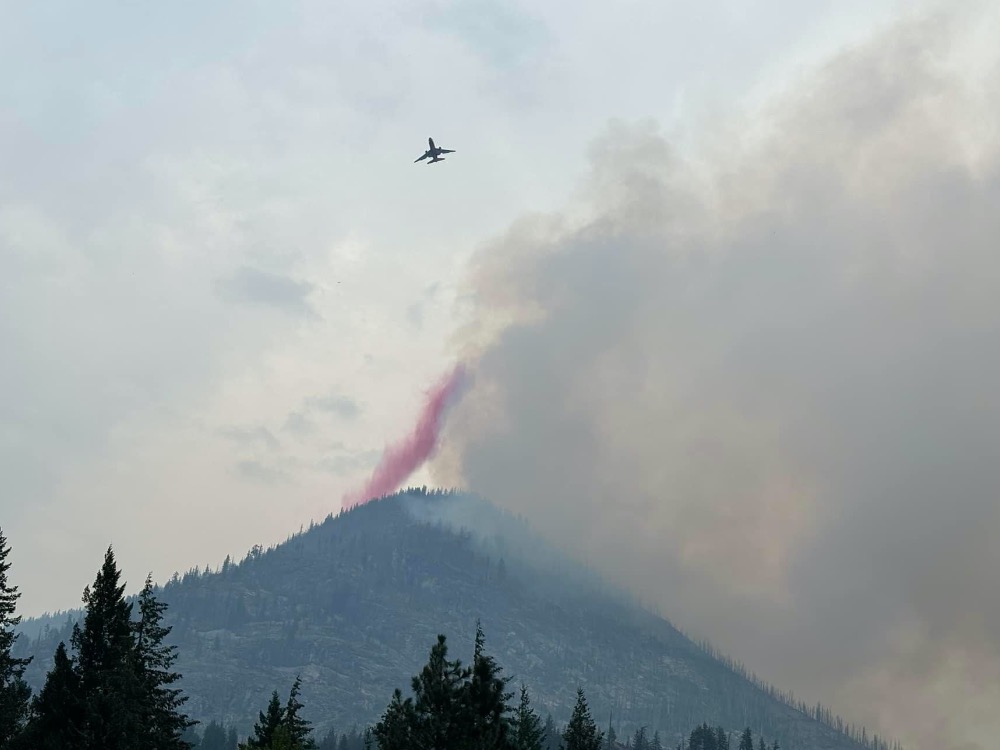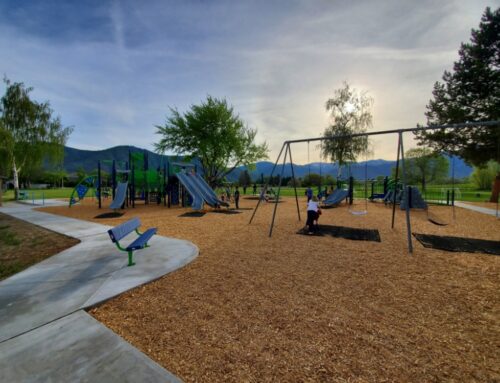Aircraft completed six drops with more than 23,000 gallons of retardant on the fireinformation released, photo courtesy of Stehekin resident, Krissa Jester California Complex Incident Management 15 is pleased to announce fire retardant drops are now taking place near the community of Stehekin. Retardant drops began last night (Aug. 10th) from both Very Large Air Tankers (VLAT) and Large Air Tankers (LAT) at approximately 5:30 p.m. on the ridgelines above Boulder Creek. Between thunderstorms and before sunset the aircraft, completed six drops delivering more than 23,000 gallons of retardant on the fire. “Every team before us has wanted to use retardant to stop the spread of this fire,” said Team 15 Incident Commander Tom Clemo “There just hasn’t been the alignment of location, safe flight paths, aerial resources and several other issues to launch this capability. All those factors lined up yesterday and we took immediate advantage of the opportunity.” The fire continues to burn above the community of Stehekin in the Boulder Creek drainage. Over the past five days, the incident management team has looked for opportunities to use retardant in the Stehekin area. With federal firefighting resources across the nation currently at a Preparedness Level (PL) 5 (the highest PL level indicating National resources are heavily committed, and additional measures are taken to support geographic areas. Active geographic areas must take emergency measures to sustain incident operations. Inactive/low activity geographic areas are reaching drawdown levels.) it took a few days to get a lead plane to come in and evaluate the route. Initial assessment indicated there was not enough room for the airtankers to exit safely out of the canyon. Additional flights were unable to find safe areas for even smaller planes to fly. With that information, incident personal began evaluating the possibility of a Mobile Retardant Base (MRB) and utilizing helicopters to deliver the retardant. Determining the best location for the MRB would be in Mazama the team put a Land Use Agreement in place. In an exchange of resources between incidents, a Sikorsky S-64 Skycrane was assigned to the incident which was placed into service on August 10. While developing the rotor wing solution, Team 15 members did not give up on the idea of utilizing fixed wing assets to deliver retardant. Air Operations Branch Director, John Crotty worked with Pioneer Fire Branch 1 Supervisor and the Washington Department of Natural Resources and determined an area north of Boulder Canyon as a potential drop area and approved after a scouting flight flew the area. Six retardant drops delivered more than 23,000 gallons of retardant on the higher prominent ridge even as thunderstorms developed in the area. With fixed wing assets able to operate, incident were able to focus their efforts on the numerous fire starts (initial attack) caused by the recent series of lightning storms. The Skycrane will continue retardant drops in the deeper canyons today working with an Interagency Hotshot Crew to coordinate actions on the ground. All told, fire managers hope to complete more than three miles of containment along the northwest flank of the fire. Please see the below supplemental information for more detailed information about the use of LAT and VLAT on an incident. For more information, please contact California Complex Incident Management Team 15 Public Information Officer, Melanie Banton at melanie_banton@firenet.gov or at 41.861.5808. Supplemental InformationCalifornia Complex Incident Management Team 15, is a Complex Incident Management Team (CIMT) overseeing the Pioneer Fire is dedicated to protecting lives, property, and natural resources through the safe and effective use of all available firefighting tools, including aerial fire-retardant drops. However, it is important to emphasize the significant risks associated with deploying fire retardant in steep and rugged terrain. Why This Terrain Is Particularly Dangerous:The rugged terrain in the area of the Pioneer Fire presents unique challenges that make the aerial application of fire retardant both essential and hazardous. Key factors contributing to the danger include:
Safety Measures and Mitigation Efforts:Given these challenges, the IMT is taking comprehensive steps to mitigate the risks associated with fire retardant drops in steep terrain:
Continued Vigilance:The Pioneer Fire and California Complex Incident Management Team 15 continues to prioritize safety in all aspects of our fire suppression efforts. While the use of fire retardant in rugged terrain is inherently dangerous, it is a crucial tool in slowing the fire’s advance and protecting lives and property. We appreciate the understanding and support of the community as we navigate these challenging conditions. For more information and regular updates on the Pioneer Fire, please visit Wases Pioneer Information | InciWeb (wildfire.gov) About California Complex Interagency Incident Management Team 15 (CACIMT15)The Incident Management Team is a collaborative group of federal, state, and local agencies dedicated to managing wildfire incidents in a safe and effective manner. Our mission is to protect lives, property, and natural resources through coordinated fire suppression efforts. |








